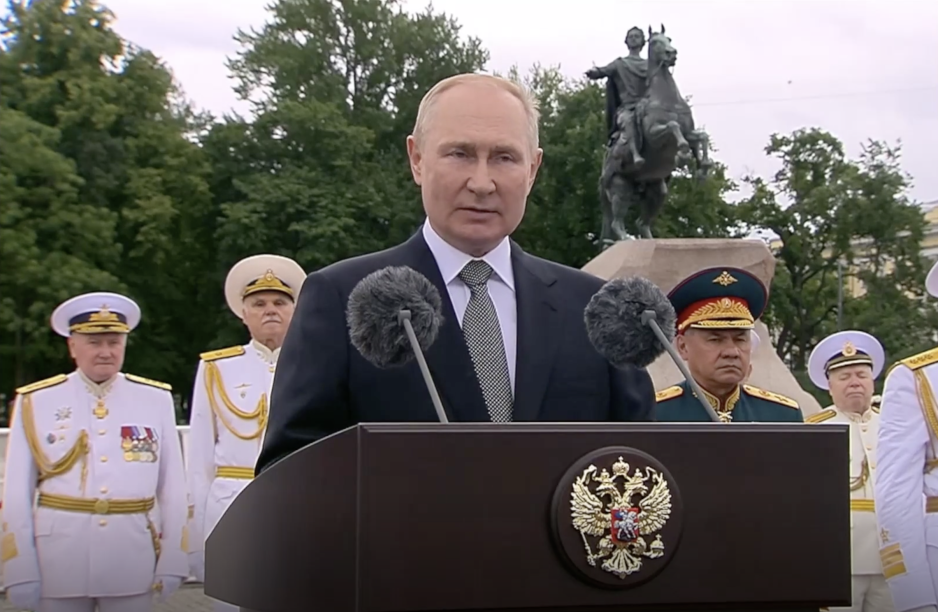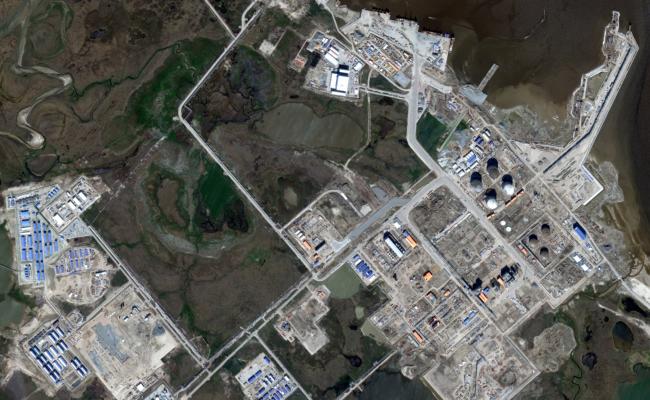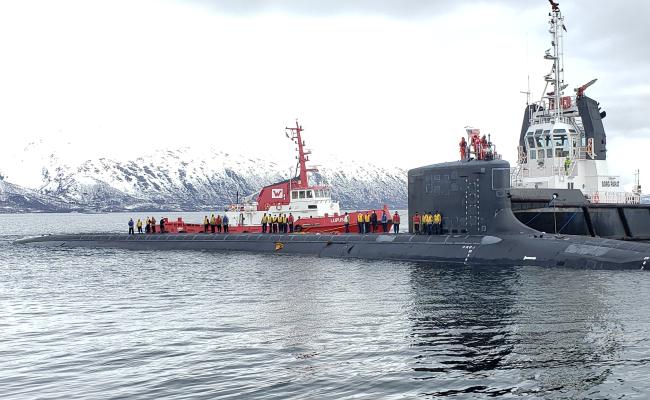Control Over Arctic Ocean Top Priority Of New Russian Naval Doctrine

President Putin speaks during the 2022 Navy Day. (Source: Courtesy of Russian Presidential Press and Information Office)
Russia’s new maritime doctrine identifies U.S. and NATO maritime activities in the Arctic as major security threats. Putin states that Russia will protect its Arctic waters firmly and by all means.
Russia’s new 55-page naval doctrine places significant emphasis on the Arctic outlining the country’s priorities in the region and mentioning the Arctic across 22 pages.
President Putin, who signed the new document on Navy Day this past Sunday, described a plethora of measures Russia would engage in to enhance the Navy’s warfare capabilities in the Arctic and the world’s oceans.
"First of all, these are our Arctic waters, [...] we will ensure their protection firmly and by all means," Putin said.
The policy comes on the heels of 15 years of revitalizing Arctic and maritime assets, including the reopening of more than a dozen Russian Arctic military airfields and bases since 2007.
The document ascribes a growing role of Russia’s Navy in ensuring the defense of the country in the region. According to Russia the Arctic will see a transformation into a region of global competition, not only from an economic but also from a military point of view.
Security experts confirm that the naval doctrine formalizes the maritime dimension of Russia’s resurgence as a regional hegemon with offensive capabilities and interests.
“The new doctrine tells us what they have done and what they are planning on doing. Russia is reintroducing military force into the regional dimension and now they are focusing on the maritime side, including in the Arctic,” explains Rob Huebert, associate professor at the University of Calgary and a senior research fellow with the Centre for Military and Strategic Studies.
New offensive capabilities in Arctic
The doctrine identifies U.S. and NATO maritime activities in the Arctic as a major threat to Russia. Specifically the document states that efforts by the U.S. and NATO to weaken Russia’s control over the Northern Sea Route and the building up of foreign naval presence in the Arctic are a key challenge to its security.
The U.S. and NATO have engaged in a number of joint exercises in the Arctic over the last few years. Just last week Tromsø saw the visit of the fourth U.S. submarine this year.
To counter this security challenge the new policy describes a host of measures.
Russia announced that it will be stepping up its patrol activities in the Arctic, including in the maritime areas around Svalbard, Franz Josef Land and Novaya Zemlya. Specifically, the document stipulates the “diversification and intensification of maritime activities and enhanced combat-readiness of the Northern Fleet.”
The Russian Navy will be also adding new offensive capabilities to its fleet by taking delivery of hypersonic missiles.
“In the coming months, the delivery of the latest Zircon hypersonic systems, which have no analogues in the world, will begin to be delivered to the Russian fleet,” Putin announced.
The doctrine also makes note of adding modular capabilities to icebreakers, which could equip the vessels with cruise missiles, torpedo launches or other weapons.
Russia did not develop those capabilities over night.
“Adding hypersonic missiles to submarines and surface vessels give them greater war fighting capabilities,” explains Huebert.
He continued, “Russia did not develop those capabilities over night. The world did not change in February 2022, the real change happened over the past two decades.”
These capabilities also include means to conduct unconventional warfare, such as the cutting of subsea communications cables. Such an incident occurred earlier this year when an important undersea fiber optic cable connecting mainland Norway to Svalbard was cut, with Russia suspected to be the culprit.
Emphasis on the Northern Sea Route
The doctrine calls for Russia to exercise full control over its internal waters of the Northern Sea Route (NSR) and the naval activities of foreign states. For this purpose the Russian government also announced the creation of a new Main Directorate of the NSR to surveil and organize traffic along this route.
The document sees the NSR as a key to the development of the Arctic zone of Russia as a strategic resource base and calls for an increase in the volume of geological exploration and production of hydrocarbon resources on the Russian continental shelf.
For this purpose the policy demands further development of domestic shipbuilding capabilities in the country’s Far Ear shipyards to construct large-tonnage vessels for use in the Arctic.
The naval doctrine represents a comprehensive effort to counter U.S. and NATO’s influence in the Arctic, concludes Huebert.
“Russia’s ambitions in the region are unambiguous. It sees itself as the Arctic maritime hegemon.”




